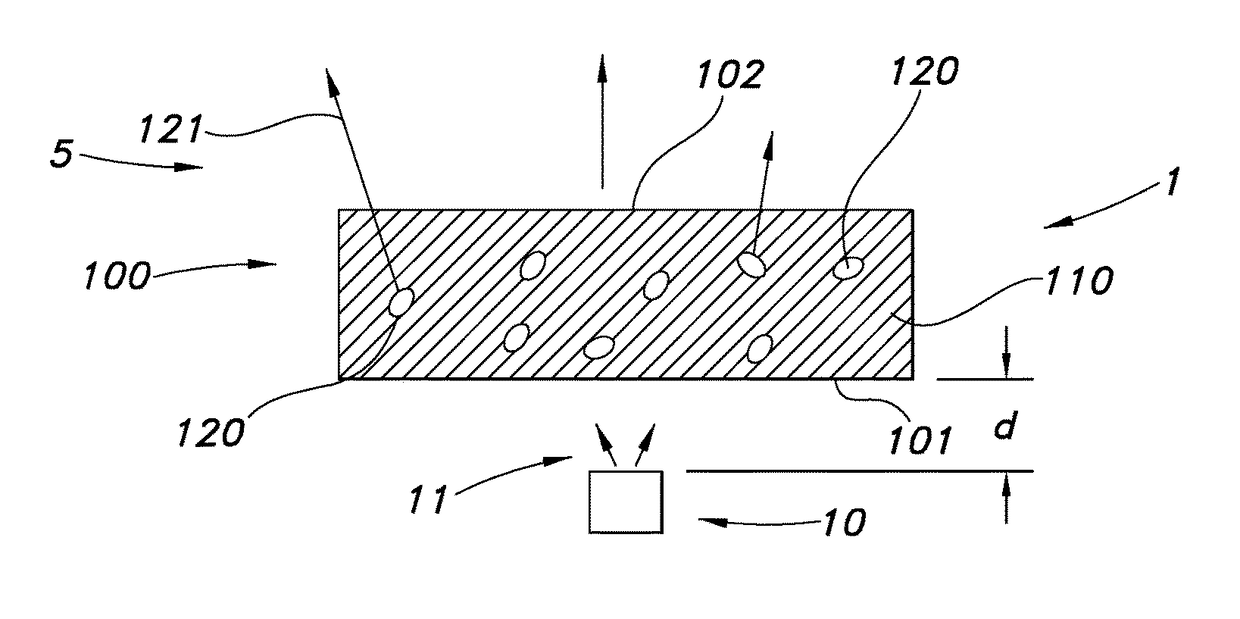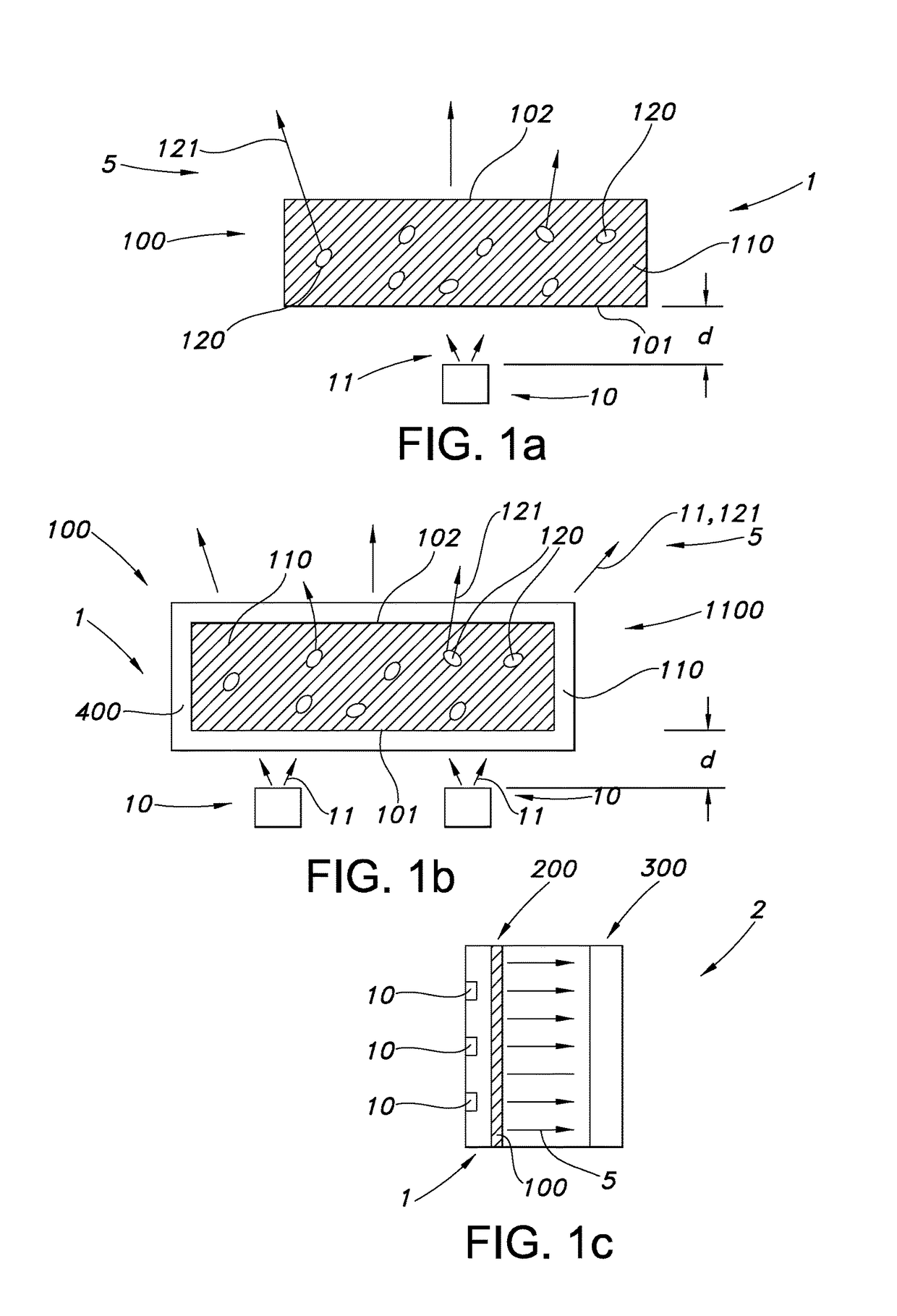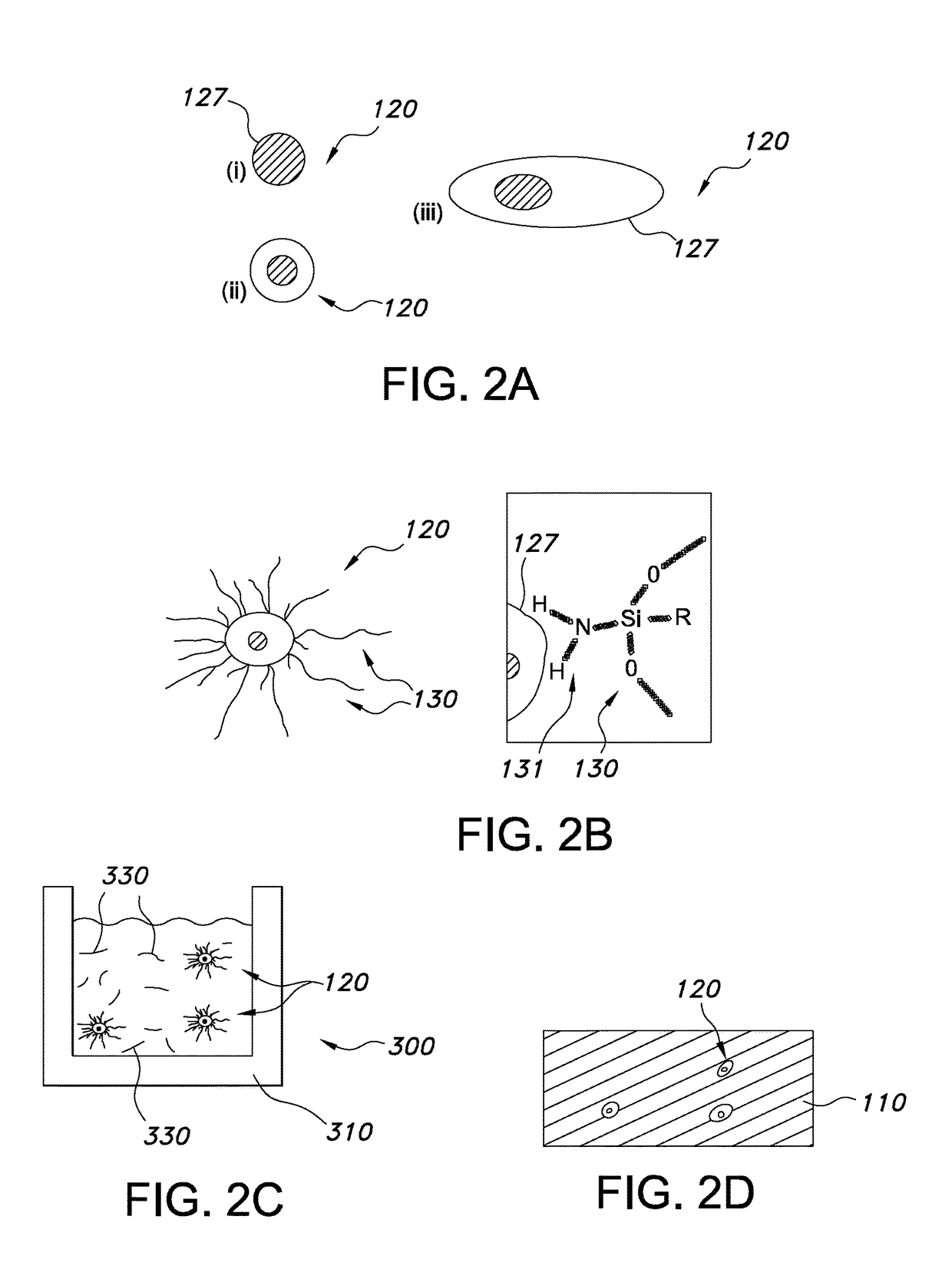PDMS-based ligands for quantum dots in silicones
a technology of silicone and ligands, which is applied in the field of pdms-based ligands for quantum dots in silicones, can solve the problems of poor process ability, poor stability of qd powders (without matrix), and poor stability of qd powders in high blue light flux, and achieves high quality, high interest in lighting applications, and narrow emission band
- Summary
- Abstract
- Description
- Claims
- Application Information
AI Technical Summary
Benefits of technology
Problems solved by technology
Method used
Image
Examples
Embodiment Construction
[0106]FIG. 1a schematically depicts a lighting device 1 comprising a light source 10 configured to generate light source light 11 and a light converter 100 configured to convert at least part of the light source light 11 into visible converter light 121. Here schematically only one light source 10 is depicted. However, more than one light source 10 may be present.
[0107]The light converter has an upstream side 101 (part of an external surface of the light converter), which is at least partly directed to the light source 10, and a downstream side 102 (part of an external surface of the light converter), which faces away from the light source 10 (in this transmissive configuration).
[0108]The light converter 100 comprises a polymeric host material 110 with light converter nanoparticles 120 embedded in the polymeric host material 110. These can be dots, rods, a combination thereof, etc. (see also above). The light converter nanoparticles 120 generate upon excitation by the light source l...
PUM
| Property | Measurement | Unit |
|---|---|---|
| particle size | aaaaa | aaaaa |
| particle size | aaaaa | aaaaa |
| particle size | aaaaa | aaaaa |
Abstract
Description
Claims
Application Information
 Login to View More
Login to View More - R&D
- Intellectual Property
- Life Sciences
- Materials
- Tech Scout
- Unparalleled Data Quality
- Higher Quality Content
- 60% Fewer Hallucinations
Browse by: Latest US Patents, China's latest patents, Technical Efficacy Thesaurus, Application Domain, Technology Topic, Popular Technical Reports.
© 2025 PatSnap. All rights reserved.Legal|Privacy policy|Modern Slavery Act Transparency Statement|Sitemap|About US| Contact US: help@patsnap.com



